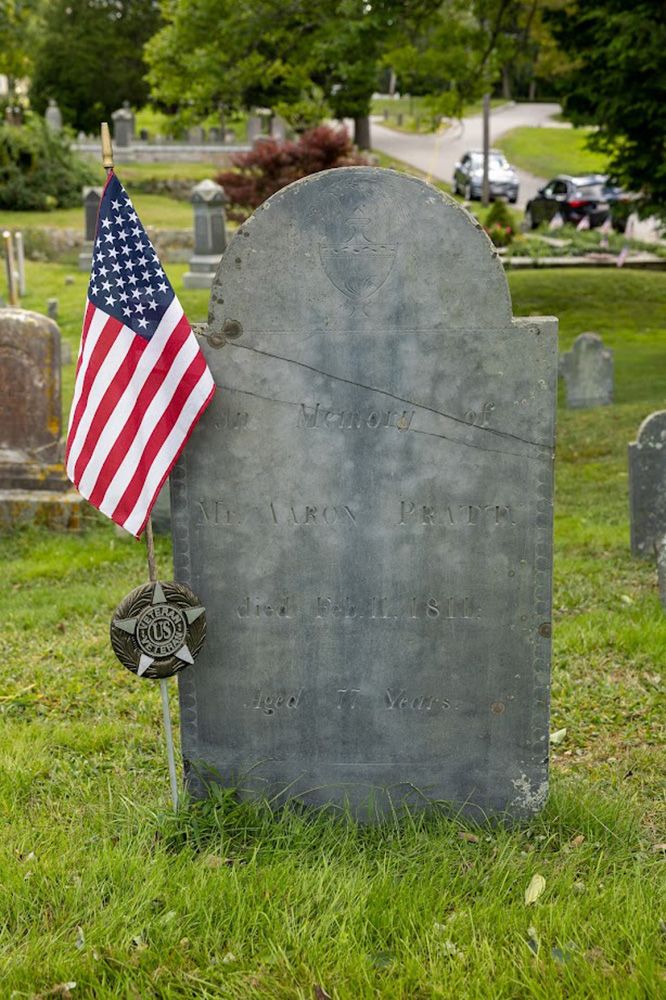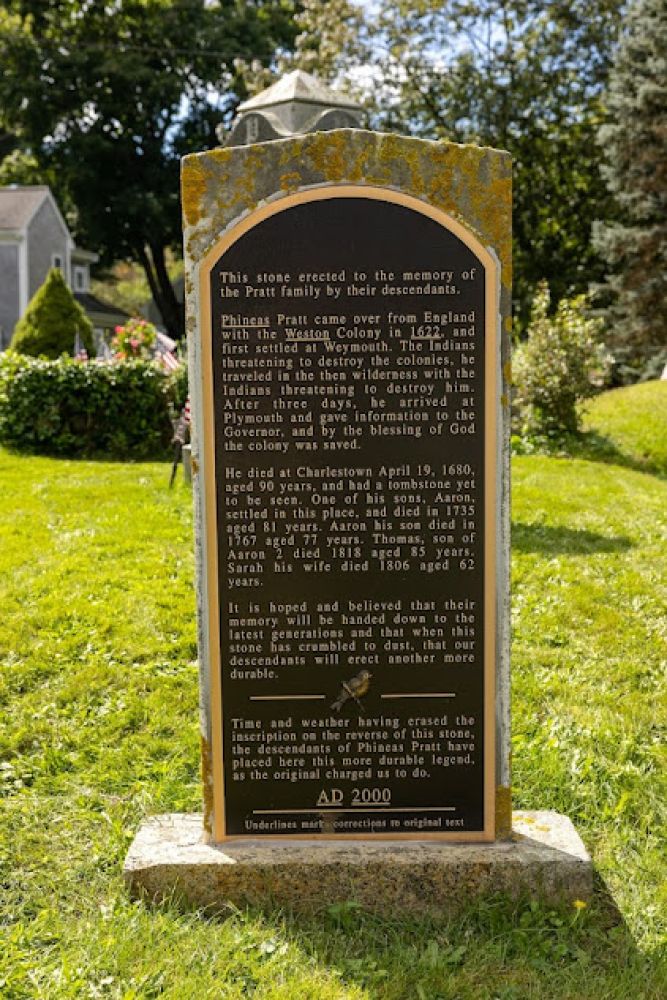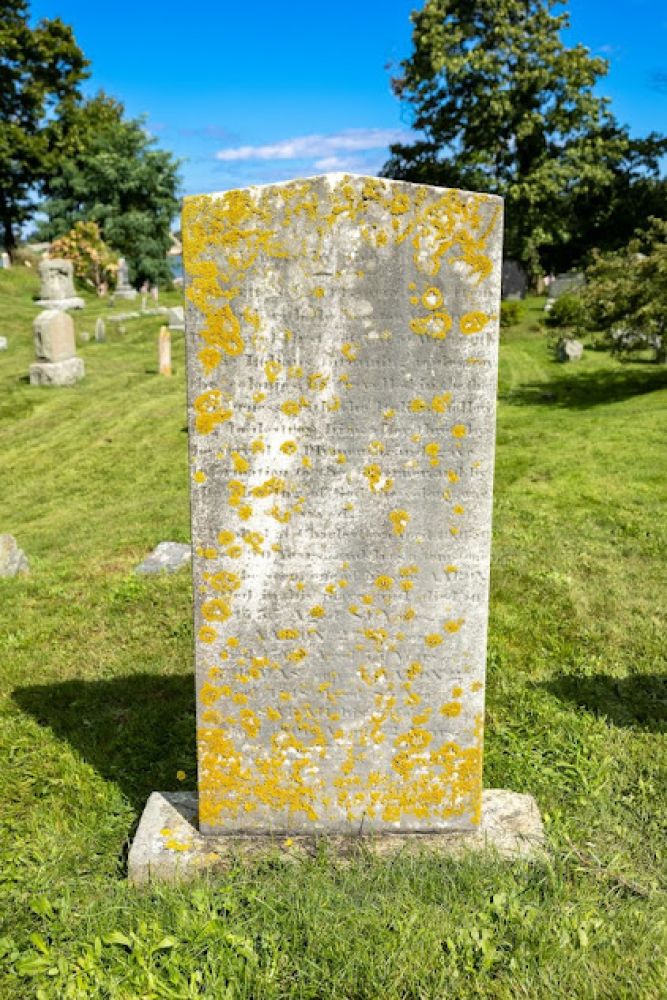
27. Aaron Pratt
Pratt was the son of Phineas Pratt (1593–1680), a joiner or furniture craftsman in Charlestown. Phineas was part of the contingent that settled Wessagusset Colony in 1622 after Massasoit vouched for it to other Native Americans. This area became Weymouth.
Aaron moved to Plymouth Colony’s new settlement “Hingham” in 1685 and became an independent yeoman farmer. He had 18 acres of upland from the water that was 200 feet wide and on a section of it, that’s now South Main Street, he built a two-story house with a gable wood roof. The lower level was made of stone and the windows had a small diamond pattern known as "quarrels", glass inserted in leaden sashes. Pratt was a wealthy man and in 1711 was taxed on a headcount of two, plus one house, four meadows (not farmed), 30 pastures, one horse, four oxen, four cows, 20 sheep, and one pig. His son, Aaron Jr., also had one house but no animals.
Aaron’s son, Aaron Jr. inherited the farm, which had grown to 1000 acres in Hingham and had sheep, swine, and cattle. He spun yarn from two spinning wheels to create clothes for Hingham residents. Unfortunately, the sheep attracted wolves so a bounty of several shillings was placed upon their heads. The town had two wolf pits disguised with branches to capture the wolves. One was on Aaron Pratt’s land in Beechwood and the other in Samuel James’ woods behind Town Hall. The farm remained in the family for over 200 years.
The settlers were developing the solid nucleus of a business community. Pratt was among a group of Cohasset men who invested and participated in Beechwoods Ironworks, an iron forge enterprise. Fellow settler, blacksmith Mordecai Lincoln invented a triphammer to better forge smelted iron needed by the shipbuilding trade. At Cohasset Harbor, shipbuilding began with the first vessel completed in the cove in 1708.
Gallery (click any image to view the slideshow)
27. Aaron Pratt
- Plaques 1-32
- David Bates
- Levi Willcutt
- John Jacob
- Ignatius Orcutt
- Rev. Nehemiah Hobart
- Deacon Abel Kent
- Rev. John Browne
- Abel Kent
- Bethiah "Resolution" Nichols Tower
- Abraham Tower
- Abraham Hobart Tower
- Isaac Lincoln
- Paul Pratt
- Margaret Tower, Ibrook Tower
- Daniel Tower
- Gilbert S. Tower
- Thomas Stevenson
- John Stephenson
- Capt. James Hall, Persis Tower Hall
- Elijah Lincoln
- Sarah Pratt
- Cousens Family
- Capt. George Hall
- Ezekiel Stetson, John Stetson, Lydia Stutson
- Urian Oakes
- James Stoddard
- Aaron Pratt
- Christopher James
- Phineas/Aaron Pratt Family Monument
- William Hanlon
- Thomas W. Clarke
- James W. Nichols
- Plaques 33-39
- Plaques 40-54
- Charles B. Nichols
- Helen Howes Vosoff
- Levi B. Gaylord
- Edward Tower
- Francis W. Hagerty, Mary F. Hagerty
- Howard S. Reid, MD
- Richardson White
- Vietnam Casualties
- Marion H. Gibson Woods
- Jessie Bancroft Cox, William C. Cox, Jane Steele Cook
- Lawrence P. Barrett
- Stuart Robson
- George H. Mealy
- Samuel L. Jenkins
- Joseph H. Smith
- Plaques 55-64
- Artistic Features



